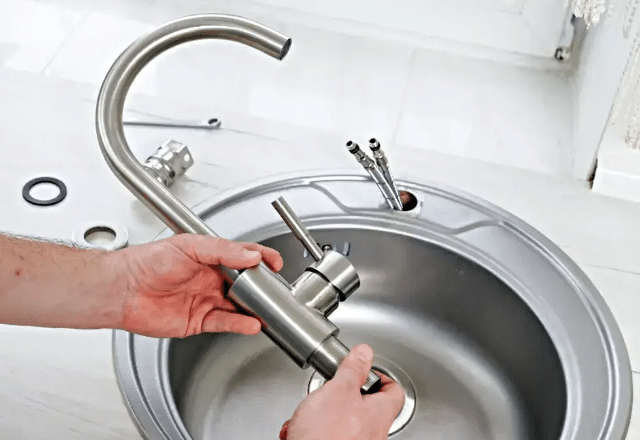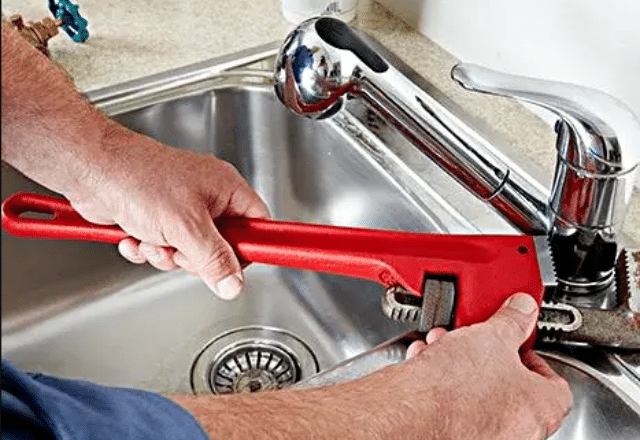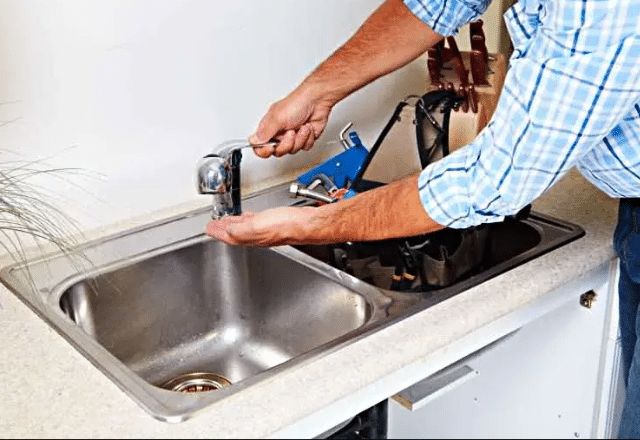
In the realm of home improvement and renovation, a seemingly small change like replacing a faucet can significantly enhance the aesthetic appeal and functionality of a kitchen or bathroom. A new faucet not only serves as a focal point but also plays a pivotal role in ensuring efficient water flow and modernizing the overall design.
The process of selecting and installing a new faucet involves considerations beyond mere aesthetics. Factors such as the type of faucet, the existing plumbing setup, and the tools and supplies required for installation all contribute to a successful outcome. Whether it’s upgrading to a more contemporary design, addressing persistent leaks, or simply seeking an enhanced functionality, understanding the nuances of faucet replacement is crucial for a seamless installation process.
In this comprehensive guide to New Faucet Installation, we’ll delve into the various reasons prompting faucet replacements, explore popular faucet types suitable for different needs, and outline the essential supplies and professional assistance needed for a successful installation. From understanding faucet styles to ensuring a watertight seal, this guide aims to equip homeowners with the knowledge necessary to embark on a successful faucet replacement journey.

Deterioration: Over time, the current faucet might deteriorate, causing leaks, reduced water flow, or unsightly appearances due to wear and tear.
Upgrade: Homeowners often consider a new faucet to upgrade the overall style or design of their kitchen or bathroom, enhancing the aesthetics.
Functionality: Addressing issues with the current faucet, such as inconsistent water flow or difficulty in operation, prompts replacement to ensure proper functionality.
Leaks and Damages: Persistent leaks or damages in the faucet, leading to water wastage or potential water line problems, necessitate a new installation.
Enhanced Features: Desire for new faucet features like pull-out functionality, low-flow features, or improved water pressure drives homeowners to replace their current faucets.

Widespread Faucets: These types of faucets have separate handles and spout and require three holes, offering a classic and sophisticated look.
Single-Hole Faucets: Ideal for smaller sinks, these faucets require only one hole for both the spout and handle, providing a sleek and minimalist appearance.
Center-Set Faucets: Featuring a single unit with handles and spout, these faucets require three holes and are commonly used in bathrooms.
Pull-Out Faucets: These versatile faucets include a retractable spray hose, making them suitable for various kitchen tasks, such as rinsing dishes.
Low-Flow Faucets: Designed to conserve water, these faucets regulate water flow without compromising performance, contributing to eco-friendly practices.

Basic Tools: These include a a basin wrench and adjustable wrench, а plastic putty knife for removing old caulk or sealant, ensuring a clean surface for the new faucet.
Specialized Tools: Sometimes, specific faucets might require unique tools for installation, ensuring a secure fit and functionality.
Silicone Sealant: Essential for sealing gaps between the faucet base and sink surface, preventing water leaks.
Flexible Supply Lines: These lines connect the water supply to the faucet and accommodate different installation configurations.
Built-in Seals: These seals or gaskets, including black seals for certain faucets, help create a watertight seal, preventing leaks around the faucet base.
Utilizing a professional plumber ensures proper installation, using the necessary supplies and tools for a successful and durable new faucet installation.

Gathering Tools: Collect the necessary tools for installation, including a basin wrench, adjustable wrench, and silicone caulk, ensuring you have the right equipment before beginning the process.
Water Valves: Shut off the water valves under the sink to prevent water flow during installation and to allow for a hassle-free process.
Preparing Sink Holes: Ensure the sink holes match the new faucet configuration, making necessary adjustments or alterations if required.
Water Connections: Disconnect the old faucet’s water supply lines, drain any remaining water in the pipes, and clean the area around the sink to prepare for the new faucet installation.

Installation Instructions: Carefully read the manufacturer’s installation instructions accompanying the new faucet, providing step-by-step tutorials for a successful installation.
Faucet Components: Assemble the separate components of the new faucet, including the faucet body, faucet neck, deck plate (if applicable), and water connections.
Installing the Faucet: Secure the faucet onto the sink, ensuring a snug fit by tightening nuts or bolts using a basin wrench and adjustable wrench.
Sealing and Connecting: Apply silicone caulk or plumber’s putty around the base of the faucet to create a watertight seal. Connect the water supply lines and ensure proper alignment.

DIY Installation: Consideration for a DIY installation involves assessing your comfort level with plumbing tasks, following step-by-step instructions, and having the necessary tools for the job.
Professional Assistance: Opting for a licensed plumber ensures precision in installation, especially when dealing with complex plumbing pipes or shorter pipes that require additional adjustments.
Additional Features and Costs: DIY installations may lack certain features or built-in seals that professionals ensure. Assess the additional factors and cost features before deciding on DIY or professional installation.
While installing a new faucet can seem like a manageable DIY project, ensuring a seamless and leak-free installation requires a keen understanding of plumbing intricacies. The steps involved, from preparation to securing water connections, demand precision and expertise to avoid potential issues that might arise during or after the installation process.
Question: What are the essential factors to consider when choosing a kitchen faucet for installation?
Answer: Selecting a kitchen faucet involves assessing the sink configuration, determining the number of faucet holes available, considering the faucet design and features like pull-out functionality, and ensuring compatibility with the cold water supply lines.
Question: Is there a significant difference in installing a bathroom faucet compared to a kitchen faucet?
Answer: While the installation process remains similar, bathroom faucets often differ in design and size. Bathroom faucets might require different faucet holes, and the design aesthetics tend to vary, but the installation principles generally align with those of kitchen faucets.
Question: What is the average cost homeowners should expect for professional installation of a new faucet?
Answer: The average cost for professional installation of a new faucet varies based on factors such as the type of faucet, complexity of installation, additional plumbing needs, and any underlying issues like faulty valves. On average, it can range from $150 to $350, inclusive of labor and basic materials.
Question: Are there specific tools required for installing certain faucet types, like a three-hole or pull-out faucet?
Answer: Yes, installing specific faucet types might require specialized tools. For instance, a three-hole faucet might need a special tool for easier tightening, while installing a pull-out faucet might involve additional precautions due to its unique features.
Question: What are the complexities involved in installing wall-mounted faucets, especially in modern plumbing systems?
Answer: Installing wall-mounted faucets involves additional plumbing considerations, ensuring proper alignment with the existing plumbing lines behind the wall. Modern plumbing systems might require precise adjustments and careful faucet removal to accommodate the new fixture effectively.
I bring over 9 years of dedicated plumbing experience to the table. As a seasoned professional in the plumbing industry, I've tackled a wide range of projects, from residential repairs to large-scale commercial installations.

